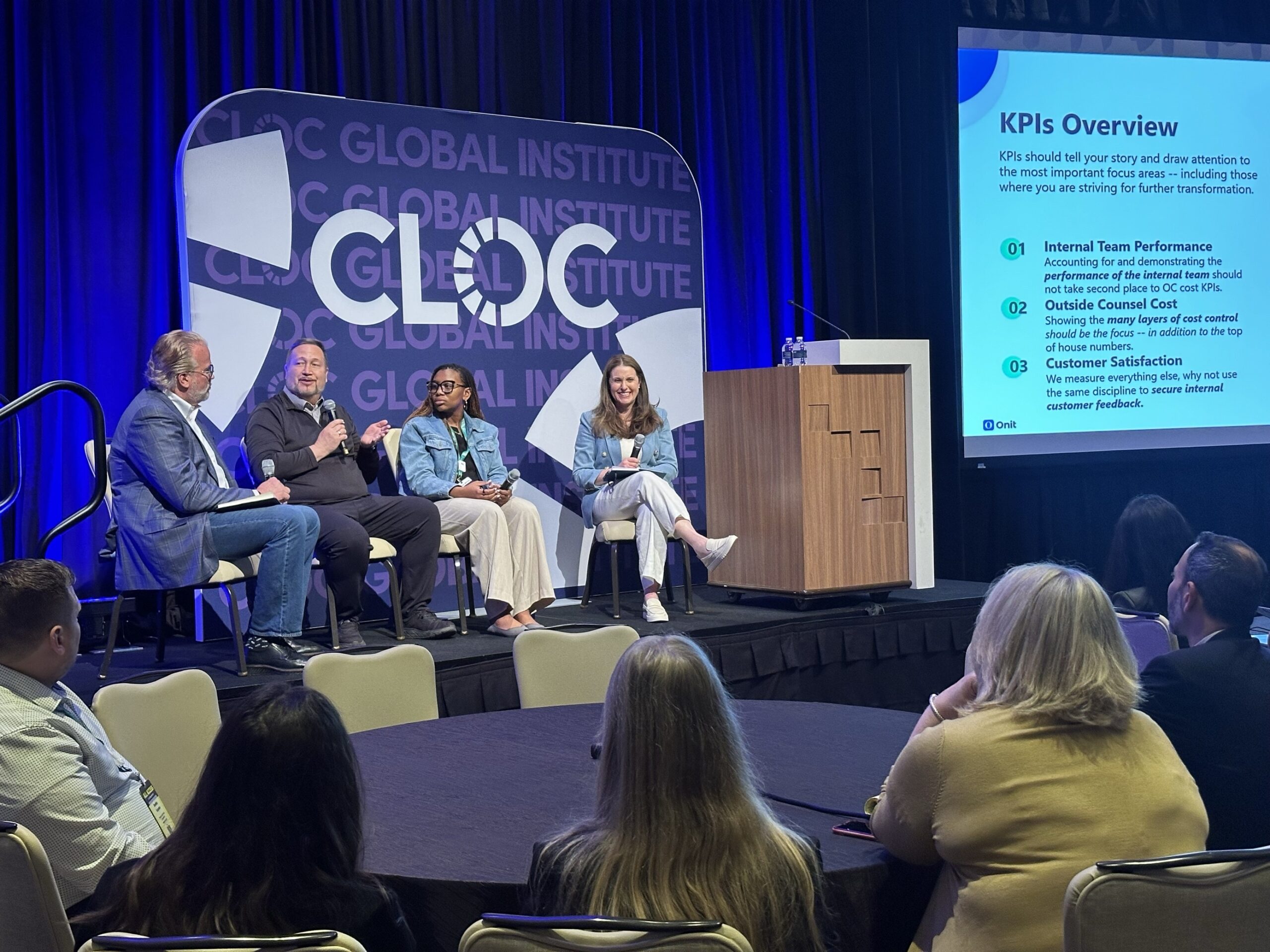Contract lifecycle management (CLM) solutions with end-to-end automation diminish risk and catapult both operational and cost efficiency — but they may also come with uncertainty about how (and why) they make a difference. Here, we dispel the misinformation so you can get back your time and empower your organization for success.
Nessie amid a swirl of bubbles in Loch Ness’ cold, murky waters. Sasquatch’s enormous footprints stomping across the forest floor. Pandora, unable to resist temptation, twisting open the jar from which all the world’s evils escape.
These are some of the most famous myths — but there are also several surrounding CLM. Although AI-powered CLM solutions have been proven to deliver advanced contract review, document management, and risk mitigation, the 2022 Enterprise Legal Reputation (ELR) Report revealed half (54%) of legal professionals still do not use automated contract processes, leaving a major opportunity untapped for legal operations to impact and transform their businesses.
It’s time to tackle those misconceptions and debunk these outdated CLM myths.
Myth #1: CLM is cost-prohibitive, time-consuming, and difficult.
“Do more with less.” In this global macroeconomic market where cost containment and efficiency are key, that has become a near-constant mantra — and this is where CLM shines.
According to the ELR Report, 40% of legal professionals spend four to five hours each day manually reviewing and managing contracts. That means half of every week, quarter, and fiscal year is tied up in contracts — making half their time unavailable for anything else and essentially costing half their salary. And though some worry it will take too long to train their departments on CLM, the latest solutions are out-of-the-box, intuitive, and ready to implement. Further, the return on investment (ROI) is real for CLM, as it has been proven to shorten the length of the typical sales cycle by 24%.
The reality is there can be no revenue recognition until contracts are signed. CLM tools accelerate the entire contract process, from document generation and redlining to e-signature and finalization. This acceleration can then pilot faster decision-making on how to push contracts through review cycles, renewals, and negotiation — leading to faster material growth and both time and spend saved.
Myth #2: CLM will take over the work attorneys do.
While this is a classic fear and “rise of the robots” sci-fi flicks might try and convince you otherwise, it’s unfounded to believe that Legal will be replaced by CLM applications or any related AI offerings.
It’s true, of course, that AI has been developed to automate many duties, and the most innovative AI-enabled CLM can review and redline a contract in under two minutes, catching errors that our overworked human gazes might mistakenly overlook. Yet there is much tech cannot accomplish: establish strategic relationships with vendors and clients; negotiate deals, give advice, and propose forward-thinking innovation; initiate significant, meaningful, and lasting change. All of these require distinctively human skills and expertise.
That said, what is true is that technology is an enabler for businesses and practitioners who do wish to evolve and grow — and though automation will not replace attorneys, attorneys who do not adopt new tech will likely be replaced by those who do.
Myth #3: Migration of legacy contracts can happen automatically.
Unfortunately, there is nothing in life nor business that is a one-press “easy” button. Some contract management tools may be bolted to systems initially built for other business uses, limiting functionality and creating challenges for data migration.
So if you’ve been told that data migration is simple — that simply may not be true. However, it doesn’t have to feel impossible. Though filing cabinets, shared drives, and Excel spreadsheets may provide an illusion of order, what they don’t provide is overall visibility of your contract portfolio. CLM augmented by AI can help organize inventory, digitize contracts, and define data points. By analyzing and extracting legacy contract metadata — including critical dates, terms, and clauses — you can create and maintain an indexed, searchable, and reportable contract repository, preventing 9.2% in revenue leakage annually.
Myth #4: My department doesn’t need CLM.
Every department hires employees, negotiates with clients, procures vendors, and settles upon agreements. And so, every department can benefit from CLM.
While Legal’s top concern may be the age-old dance of speed vs. detail immersion for risk avoidance, Sales frequently fears contract holdups will hold up further revenue potential. Procurement, meanwhile, must juggle stakeholder needs, supplier value, and budgeting and spend. Yet CLM has been found to streamline the contract lifecycle for all parties. In fact, legal departments of billion-dollar companies that employ contract management technology often reduce their average contract cycle time by over 33%, from 30 days to just 20.
If you’re thinking, “Well, my company is nowhere near that size,” scalable CLM solutions may be even more what the legal tech revolution ordered: AI-enabled platforms assist legal departments to increase their productivity by more than 50% – which is analogous to having twice as many lawyers on staff!
The (top and) bottom line
With these CLM myths busted, you have the unique opportunity to lead the evolution of contract management for your business — saving on speed and spend and influencing topline revenue generation, bottom-line cost efficiency, and operational excellence for unprecedented success.
Learn how Onit’s next-generation CLM solutions and AI-powered innovations meet you where you work with end-to-end automation of the contract management process to cultivate partnerships, elevate efficiency, and ignite revenue growth for enterprise-wide success.






